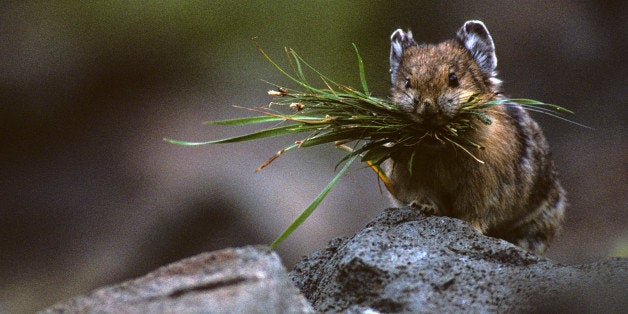
A new study reveals that climate change might not threaten pikas as much as scientists once thought.
Past research has shown that rising temperatures drive the animals to higher elevations or wipe them out completely, but University of Utah biologists discovered that roly-poly pikas in one area have found a unique way to adapt.
The pikas living in rockslides near sea level in Oregon survive hot temperatures by eating more moss than any other mammal.
"To our knowledge, this study represents the highest degree of voluntary moss consumption reported for a mammalian herbivore in the wild," states the paper, which appears in the February 2014 issue of Journal of Mammalogy.
Pikas are very sensitive to heat, and the tiny critters can die if they spend more than two hours above 78 degrees Fahrenheit.
"They basically are shaped like spheres, which is optimal for conserving heat," said biology doctoral student Jo Varner in a news release. "They have a thick fur coat and a high metabolic rate, which means they generate a lot of heat. The thick fur coat traps it, and so does their spherical shape."
Researchers observed 220 hours of pika behavior and were surprised to find that the animals were eating so much moss.
"By consuming mosses that grow on the rockslides where they live, the pikas are released from foraging outside the safety and shady heat buffer of the rocks," said Varner. By staying so close to home, the creatures are less likely to overheat or to fall victim to predators. "Few herbivores consume moss because it's so nutritionally deficient. The pikas in our study actually set a new record for moss in a mammal's diet: 60 percent."
"Some fiber is good, but this is almost all fiber," said Denise Dearing, senior author of the study. "Mosses are 80 percent fiber. It's a bit like eating paper."
Researchers also found that pikas in this population build smaller food caches to survive the winter than pikas that live at higher elevations. Living at a lower elevation with warmer temperatures gives the animals access to what the biologists describe as a "year-round salad bar."
